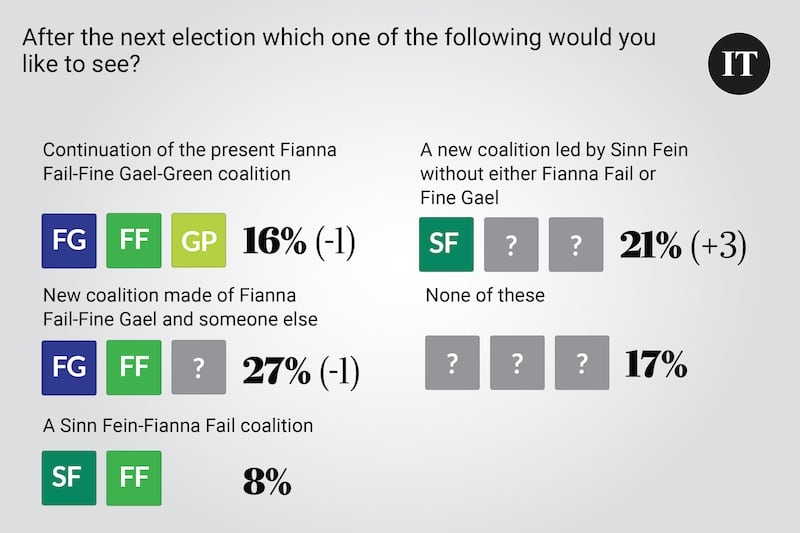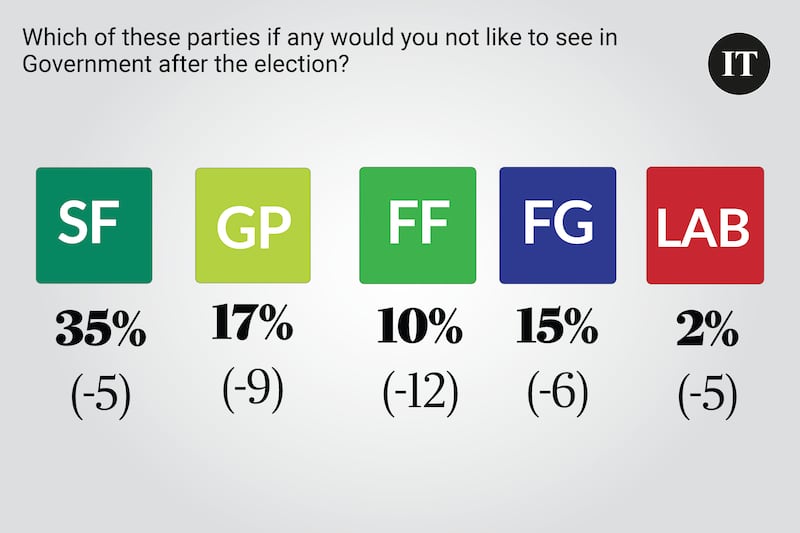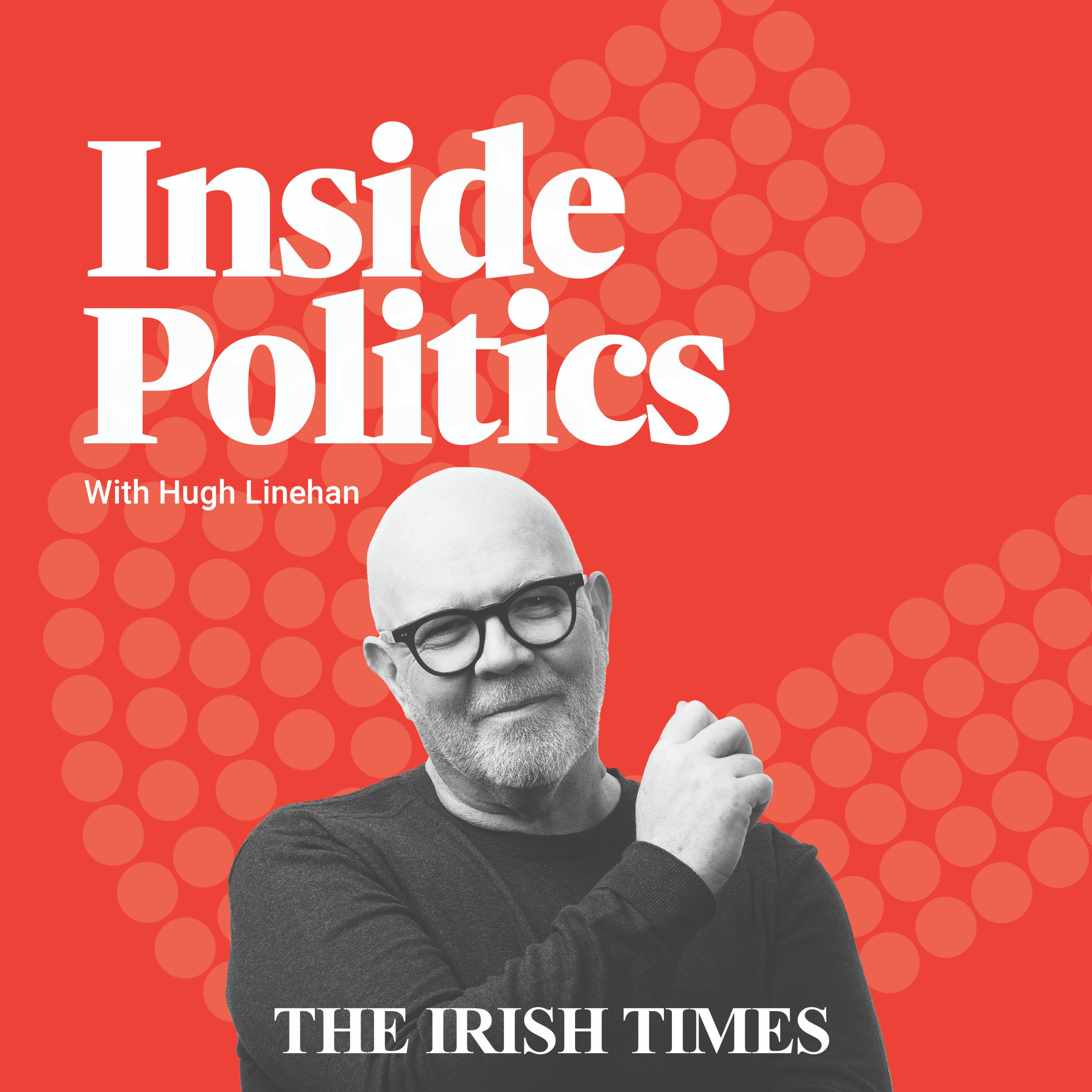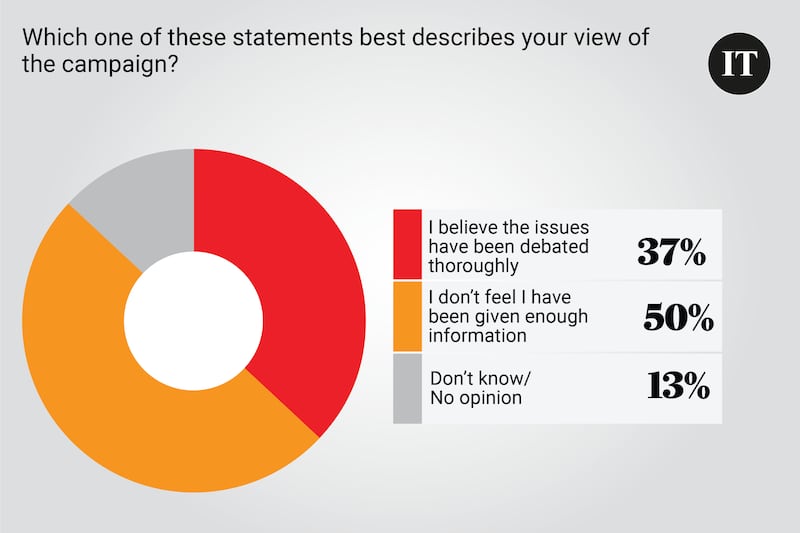You take your wins where you can get them. After the dramatic slump in support for Fine Gael reported on Monday, there is some solace for Simon Harris and his party in today’s numbers which show that Fine Gael and Fianna Fáil remain the favoured combination to lead the next government.
The single most popular coalition combination is based on Fianna Fáil and Fine Gael — but with a third party that is not the Greens, an option chosen by 27 per cent of respondents, a marginal decline of one point since the last poll at the start of the campaign.
Add to this, however, the 16 per cent who want to see the present combination returned — in other words, including the Greens — and that’s 43 per cent of voters who want to see the old rivals in Fine Gael and Fianna Fáil co-operating in government again.
That substantially outranks the next most popular option — a Sinn Féin-led coalition of the left, without either Fine Gael or Fianna Fáil — which was the preferred choice of 21 per cent, up three since the beginning of the campaign.
READ MORE
A Sinn Féin-Fianna Fáil coalition — repeatedly ruled out by Micheál Martin — was nominated by 8 per cent of voters, while 17 per cent said they liked none of the choices on offer and 11 per cent offered no opinion.


These numbers suggest that while no proposed coalition enjoys majority support, the preference of a plurality of voters for a return of Fianna Fáil and Fine Gael to government is clear. What makes governments, though, is not opinion poll approval — it’s bums on seats in the next Dáil. The poll ratings reported yesterday suggest that Fine Gael and Fianna Fáil will need at least one other party to make a Dáil majority; as Damian Loscher of pollster Ipsos B&A Ireland observed in his analysis, the idea of a two-party coalition between Fine Gael and Fianna Fáil is disappearing.

Election Daily: a new hope for Sinn Féin as Fine Gael tries to stop the rot
Campaigns are dynamic, though, and many votes are still there to be won and lost in the remaining few days of the campaign. This is what is giving Sinn Féin the hope that it can upset the form book and stage a dramatic comeback to put itself in a position to lead the next government — hence the ever louder claims from party leader Mary Lou McDonald that Sinn Féin now has the “momentum” as the campaign moves to its decisive phase.
The numbers in this poll do not support the claims of big Sinn Féin momentum. The party was up by only a point, after all. But today’s findings on the popularity of a Sinn Féin-led coalition show some movement — it’s up by three points. Put those two pieces of information together and they suggest that the momentum, to the extent that it exists, is spread across the left-wing parties rather than concentrated in Sinn Féin.
The key task, therefore, for McDonald is to persuade those people who don’t want to see FF-FG return to government — many of whom are counted among the 35 per cent of voters who want to see “radical change” — to vote for Sinn Féin. Leading the next government still seems a long way off, but it is eminently possible that Sinn Féin could be the largest party in the next Dáil.
Fine Gael, stunned by the six-point drop in its numbers, is likely to seek to refocus on the party’s economic message and to warn of the need for stability in potentially turbulent times ahead. The difficulty for the party is that it has been associated with some of the most eye-catching giveaway promises of the campaign — €1,000 for every newborn, abolish college fees and so on. You can run on prudence or you can run on let the good times roll, but you can’t run on both at the same time.
Tonight’s leaders’ debate (on RTÉ One at 9.35pm) now assumes an outsize importance for the three big parties. Martin finds himself in the unanticipated position of frontrunner — but really, there is nothing between the three parties as polling day looms. The three could end up in any order on Friday night.

The biggest task faces Harris, who is — unlike his two opponents — new to this. He must reassure nervous Fine Gaelers, appeal to those voters he has lost, and make a convincing pitch to the undecideds: remember, nearly three in 10 voters told the pollsters that they have not yet made their minds up, or that they might change their minds.
Irish elections frequently show a late surge in the campaign, with unaligned or weakly aligned voters tending to move in one direction. If that is replicating itself in 2024, it is clear that the move is away from Fine Gael. The evidence so far does not suggest yet that it is going towards any one party — rather it is finding disparate new homes.
If that continues, the result of the election will be something akin to the current picture painted by the polls; if it changes course, however, something else dramatic may be in store.
This election just became very unpredictable.
- Sign up for push alerts and have the best news, analysis and comment delivered directly to your phone
- Join The Irish Times on WhatsApp and stay up to date
- Listen to our Inside Politics podcast for the best political chat and analysis
- Sign up to our Inside Politics newsletter to get the behind-the-scenes take direct to your inbox










